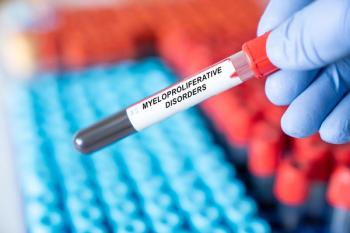
Model Facilitates T1D Diagnosis in At-Risk Pediatric Populations
Researchers developed a test to better determine which children will develop type 1 diabetes (T1D), moving closer to routine testing for newborns and potentially avoiding the risk of life-threatening complications.
Researchers developed a
T1D often develops early in life when islet autoantibody appearance signal high risk of the disease. “However, clinical diabetes can follow in weeks or only after decades and is very difficult to predict,” authors write, while “ketoacidosis at onset remains common and is most severe in the very young, in whom it can be life threatening and difficult to treat.”
Furthermore, prevention therapies carried out before T1D onset, when greater islet mass remains, are rarely feasible because individuals at greatest risk of developing T1D are difficult to identify.
Currently “no T1D screening or prediction efforts…[take] full advantage of the complementary information that age, genetic risk, family history and environmental factors offer, when combined with autoantibody status, to estimate future T1D risk in all children,” researchers write.
To address this knowledge gap, investigators developed a combined risk score (CRS) which incorporates both fixed and variable factors, enabling individualized risk estimates for better prevention trial selection, and doubling the estimated efficiency of population-based newborn screening to prevent ketoacidosis.
Using data from The Environmental Determinants of Diabetes in the Young (TEDDY) study, researchers analyzed information collected from 7798 high-risk children who were followed from birth to around 9 years of age. All participants underwent frequent autoantibody and exposure testing and physiological and clinical measurements. Researchers considered features known to indicate T1D risk including a T1D genetic risk score (GRS2), longitudinal autoantibody measurements and other medical, demographic, and environmental factors.
Models using the data predicted T1D incidence during the first 10 years of life, while the CRS was able to estimate T1D risk at various landmark ages and over specific time horizons.
Overall, investigators found a “3-variable CRS incorporating autoantibodies, GRS2 and family history performed best in cross-validated time-dependent area under the receiver operating characteristic curve (ROC AUC) analysis and using the Akaike information criterion. ROC AUCs were all ≥0.92 for landmarks ≥2 years and horizons up to 5 years.”
Compared with autoantibodies alone, the CRS also dramatically improves T1D prediction at ≥2 years of age over horizons up to 8 years of age (ROC AUC ≥ 0.9), data show.
Additional findings include:
- When present, autoantibodies conferred greater hazard ratios for T1D than GRS2 or family history components
- The CRS appears to help most for children who have not yet developed autoantibodies, or only have 1 autoantibody
- 3-variable CRS discrimination corresponded to well-separated T1D and non-T1D populations in the plotted distributions of the 3-variable CRS
- Calibration plots for the 3-variable model with the same 2- and 4-year landmarks indicate that an increasing CRS generally corresponds to an increasing actual risk of future T1D, with a mild tendency to underestimate the disease risk of children at midrange probabilities
“It is notable that exposures such as sinusitis, weight and residence country, while significant when considered alone, did not appear to add predictive value in a combined model,” authors write.
Researchers also warn that all children identified as being at high risk by the CRS will not developing childhood T1D. Future validation of the CRS ought to take place with a separate dataset incorporating children with a wide range of GRS2 risks, authors conclude.
Reference
Ferrat LA, Vehik K, Sharp SA. et al. A combined risk score enhances prediction of type 1 diabetes among susceptible children. Nat Med. Published online August 7, 2020. doi: 10.1038/s41591-020-0930-4
Newsletter
Stay ahead of policy, cost, and value—subscribe to AJMC for expert insights at the intersection of clinical care and health economics.













































